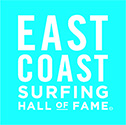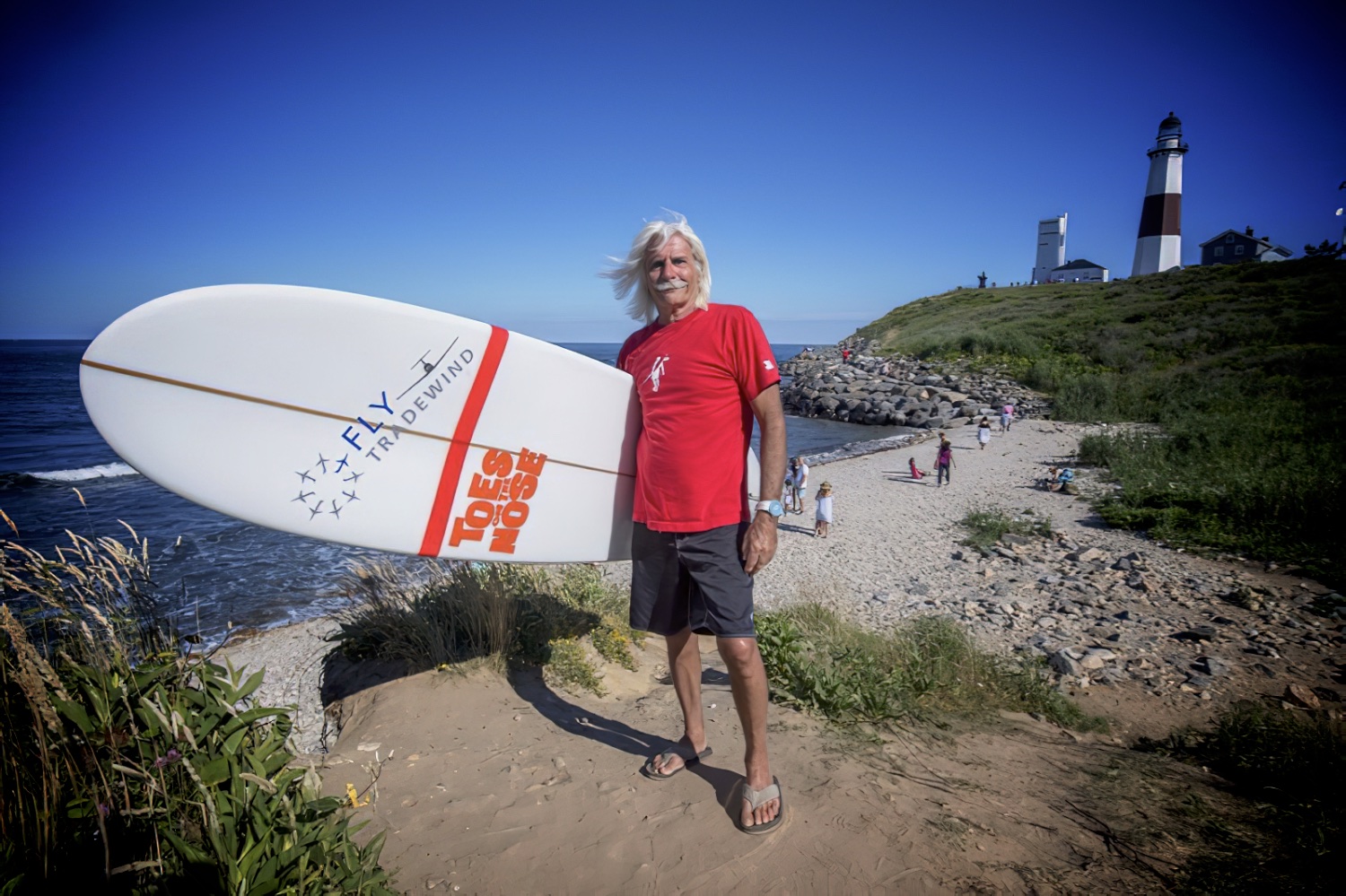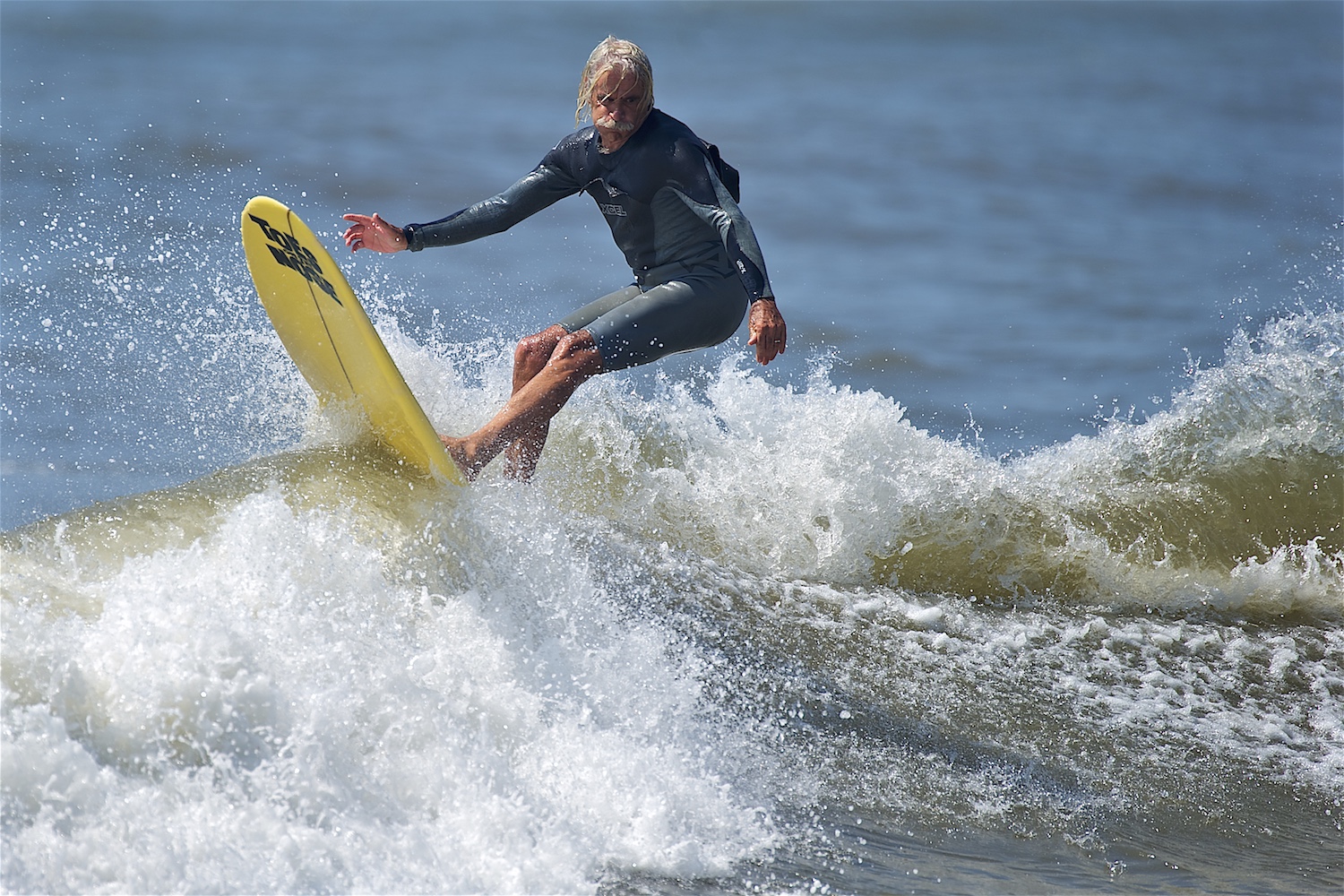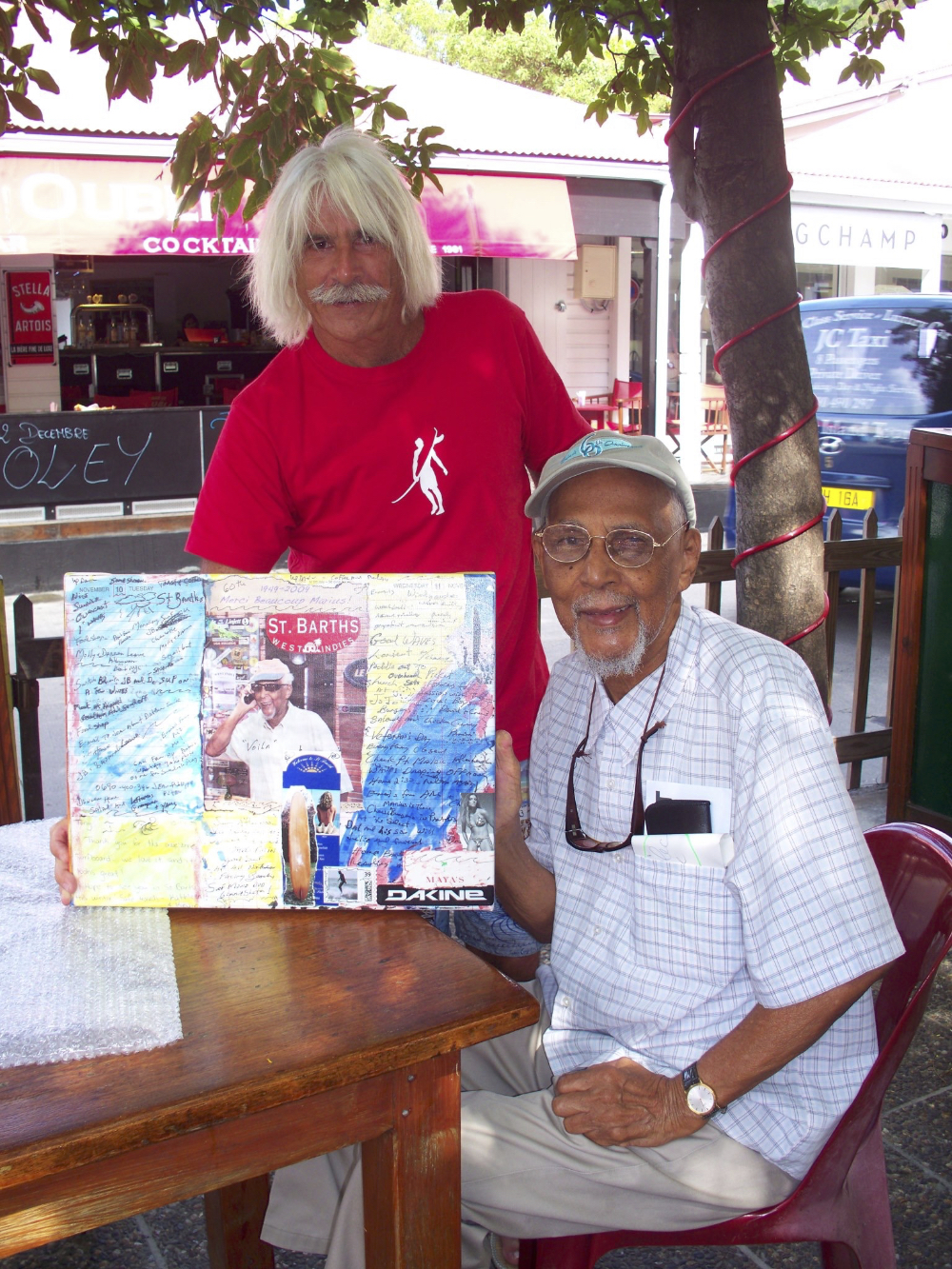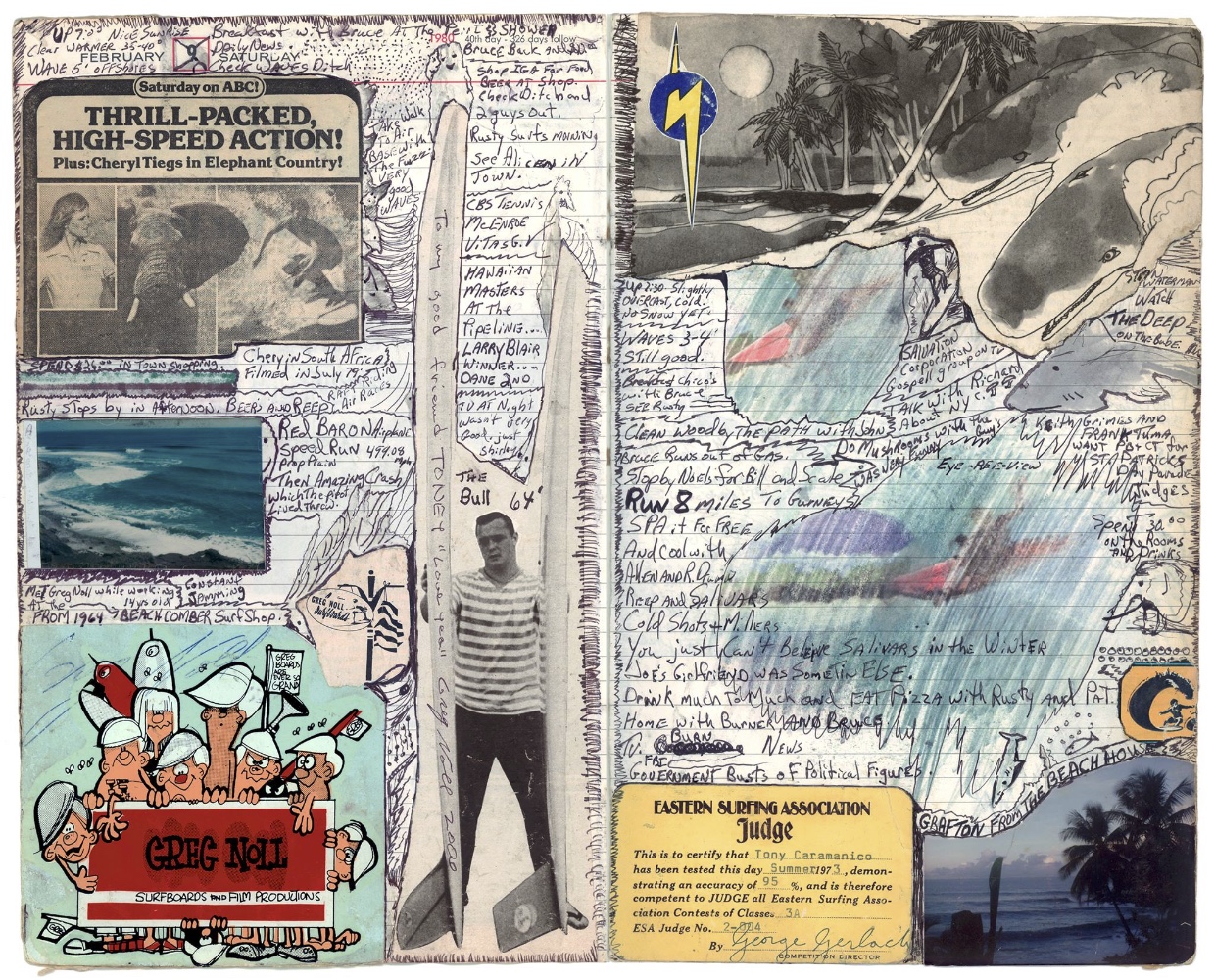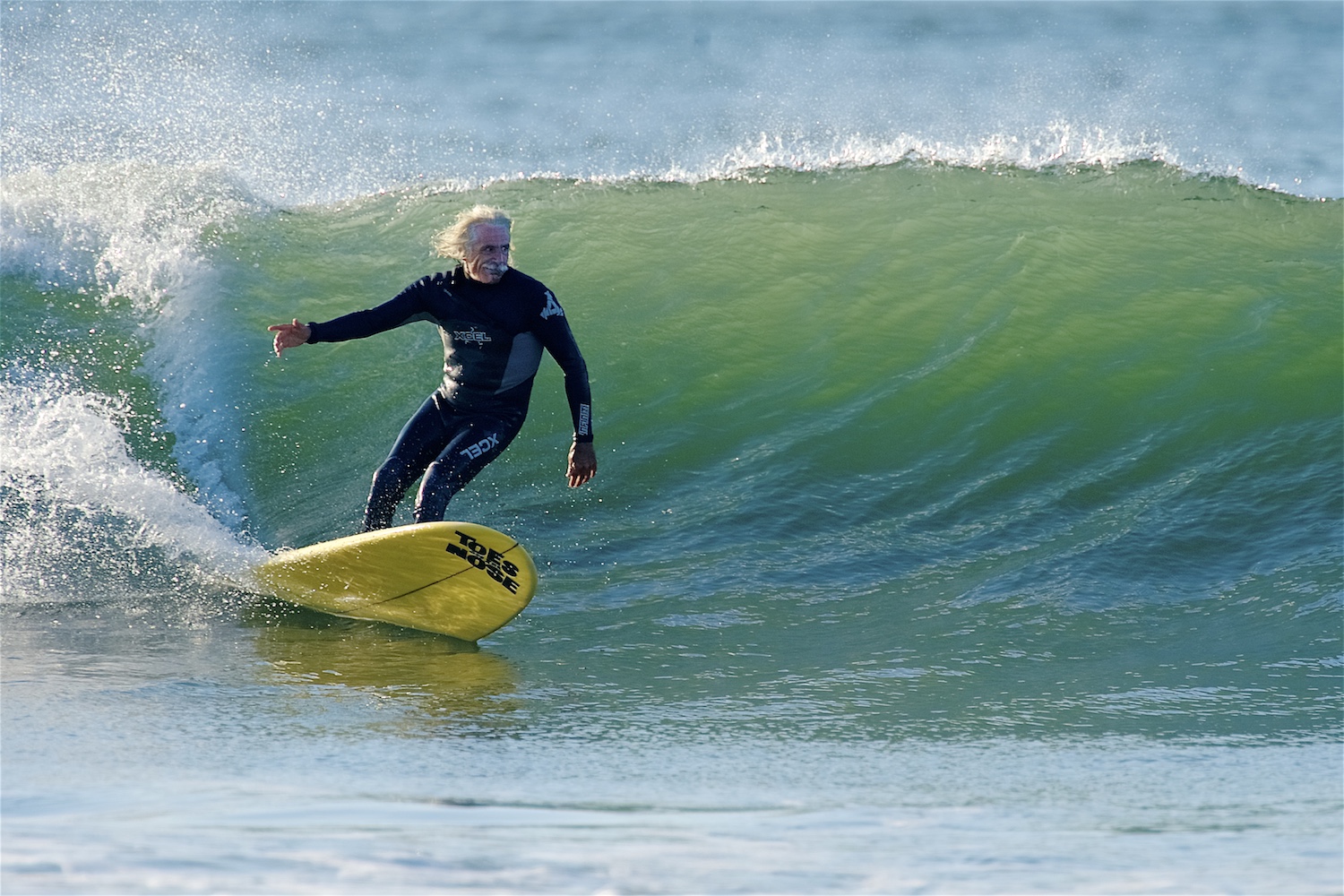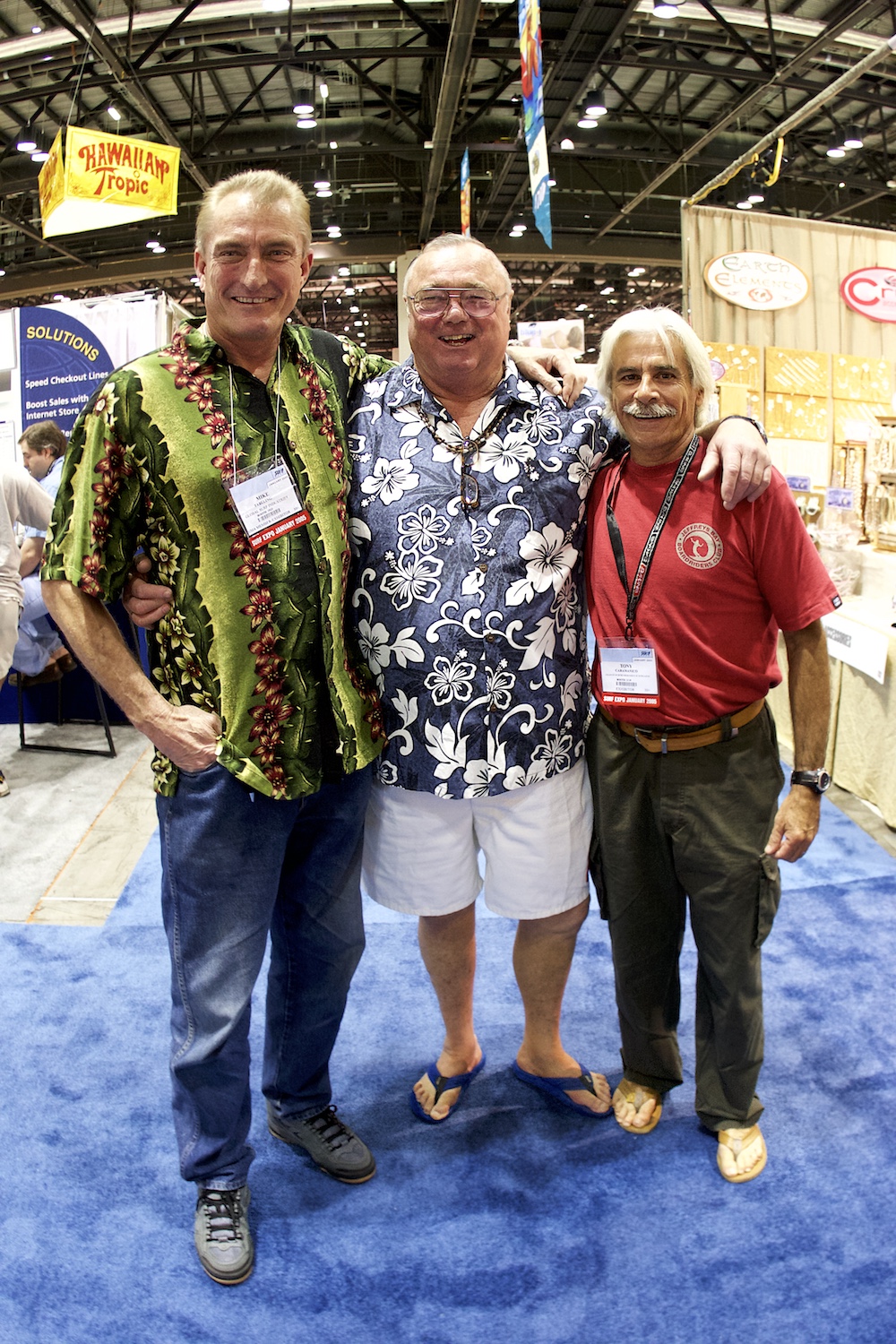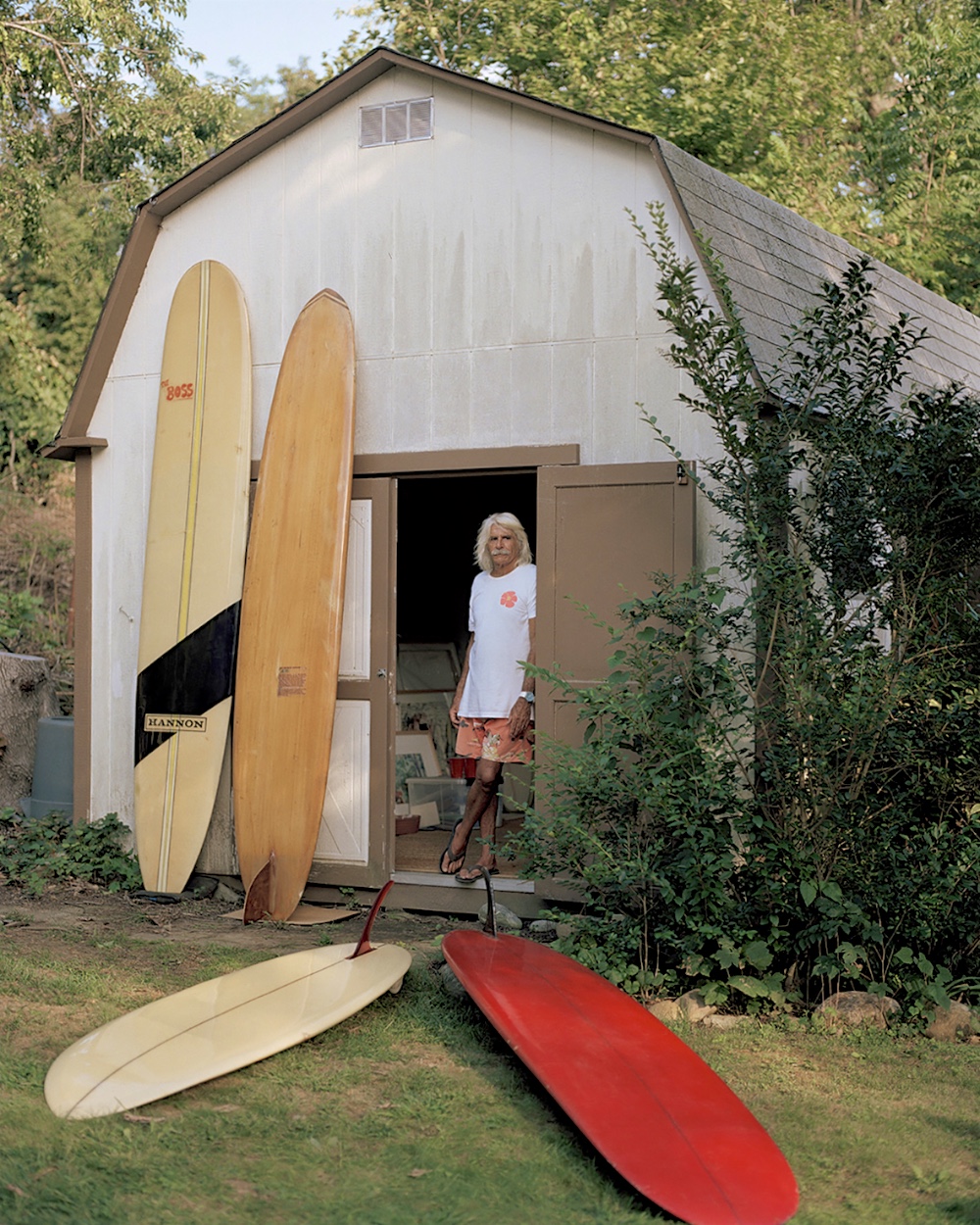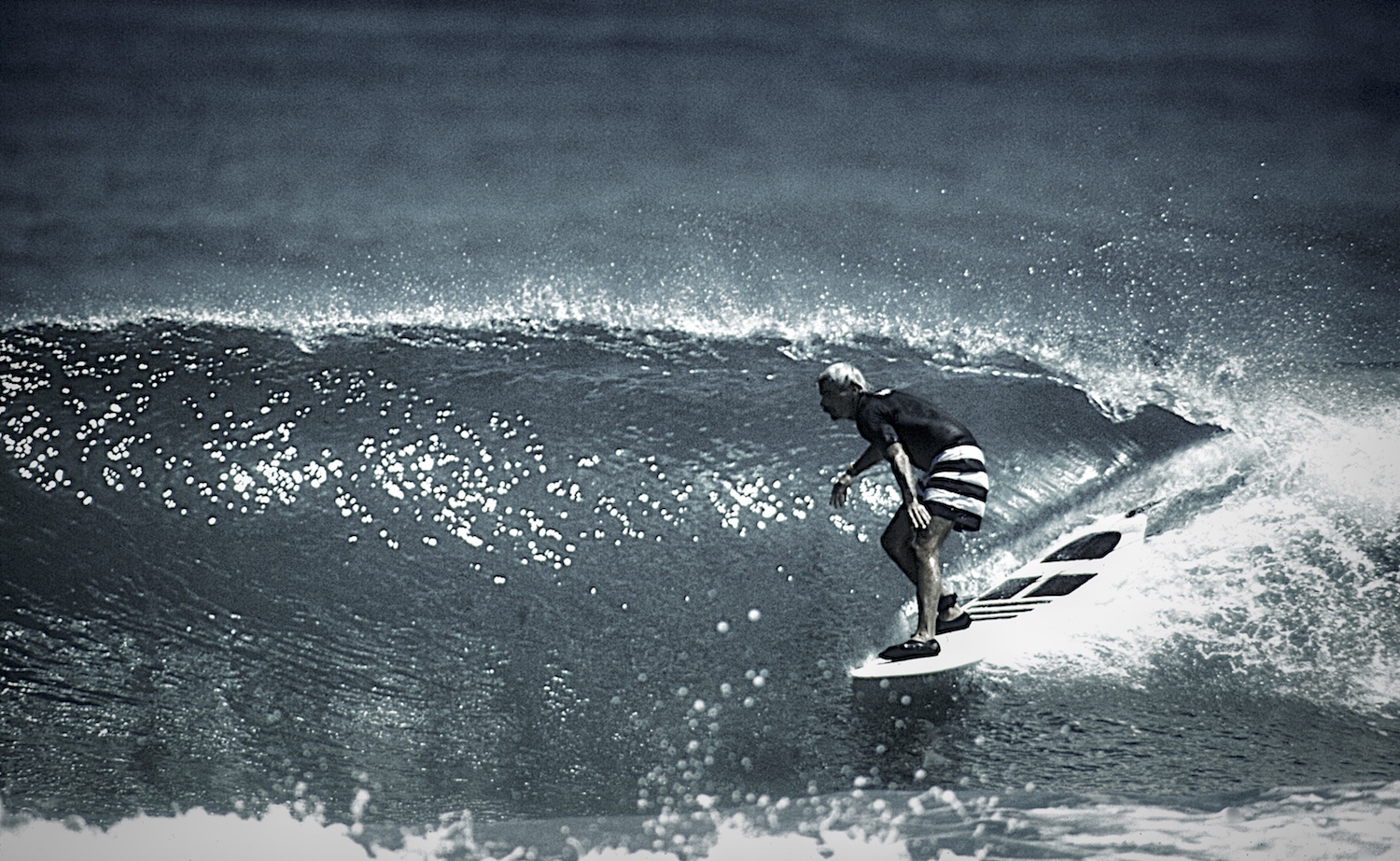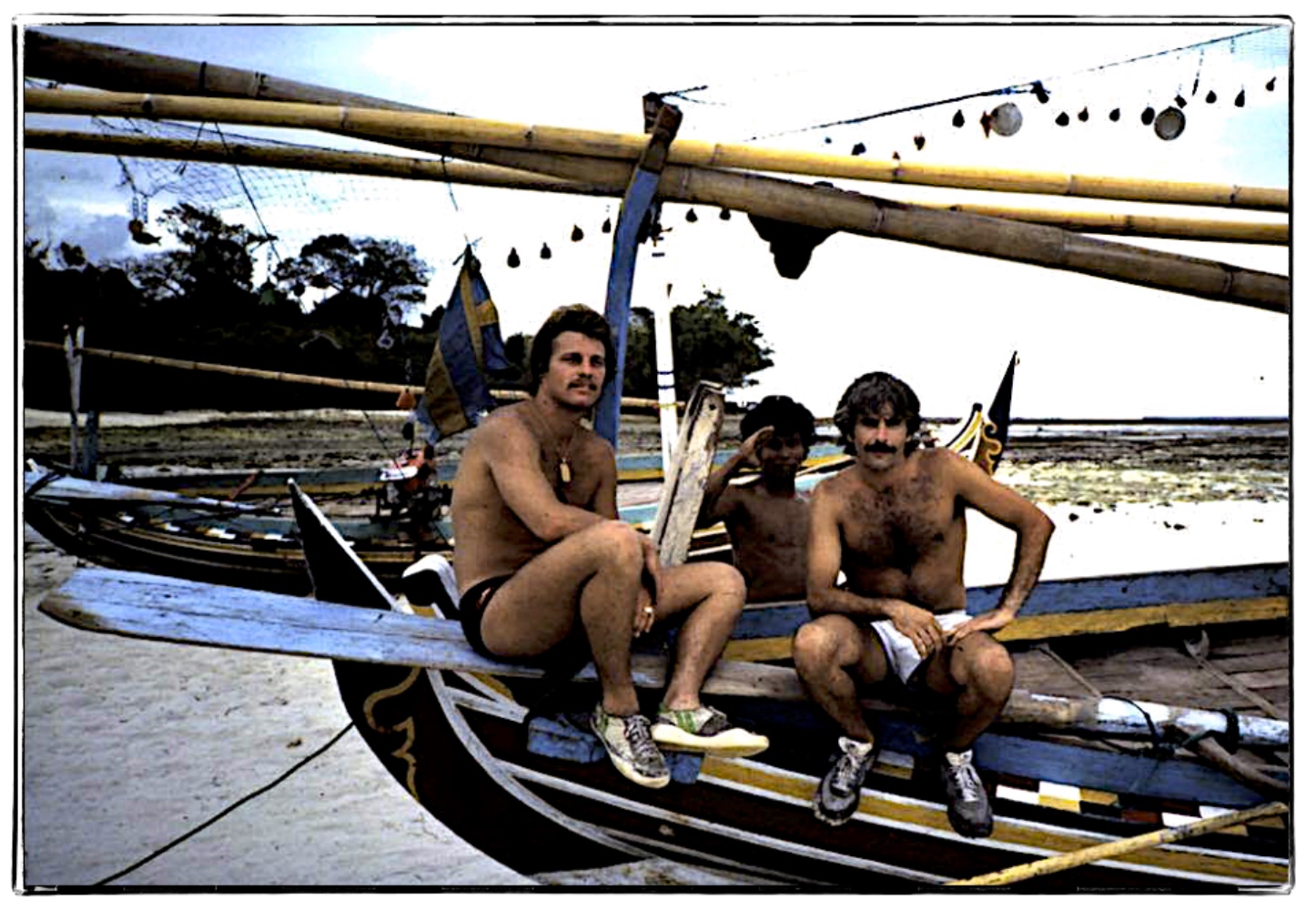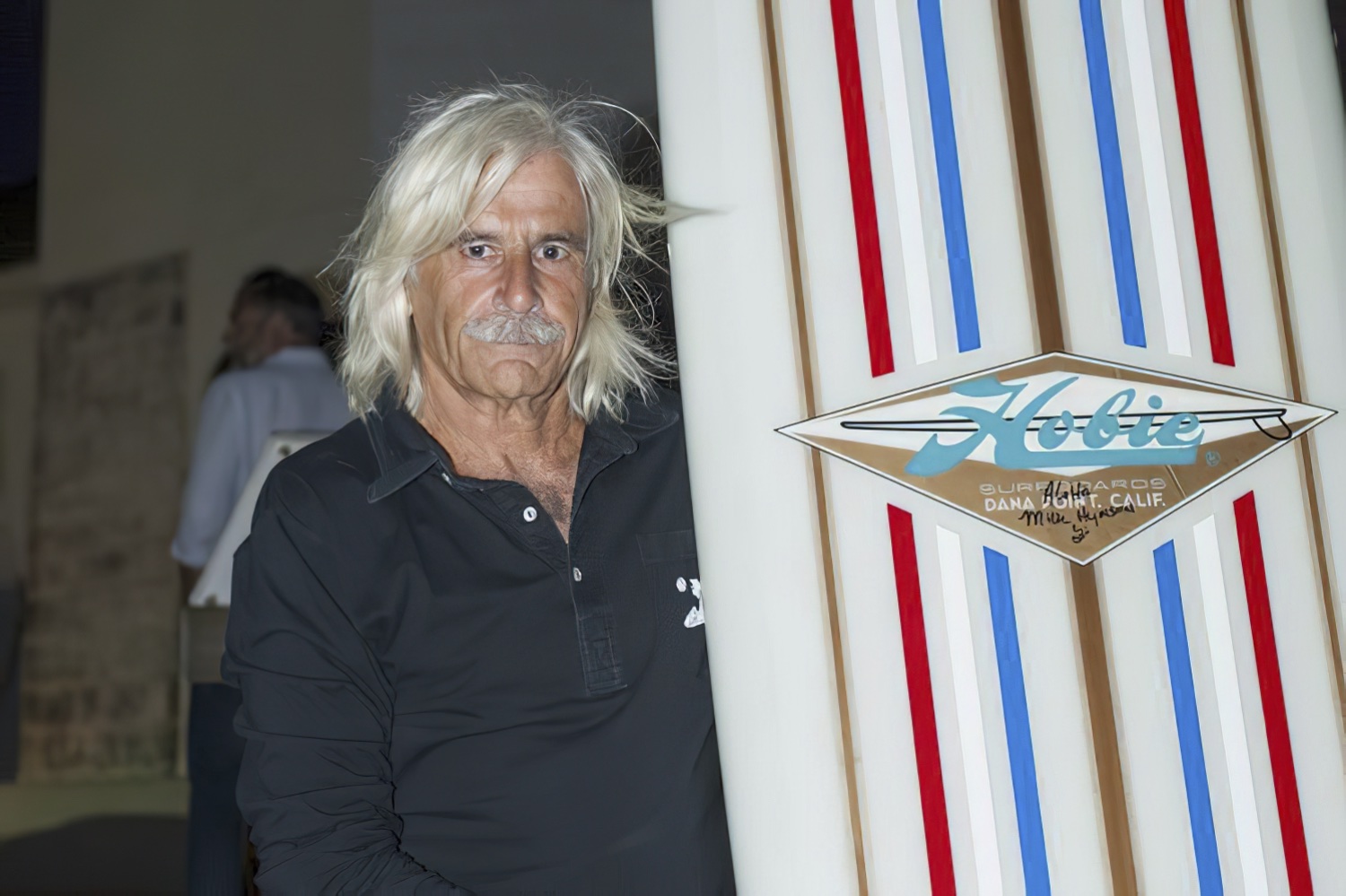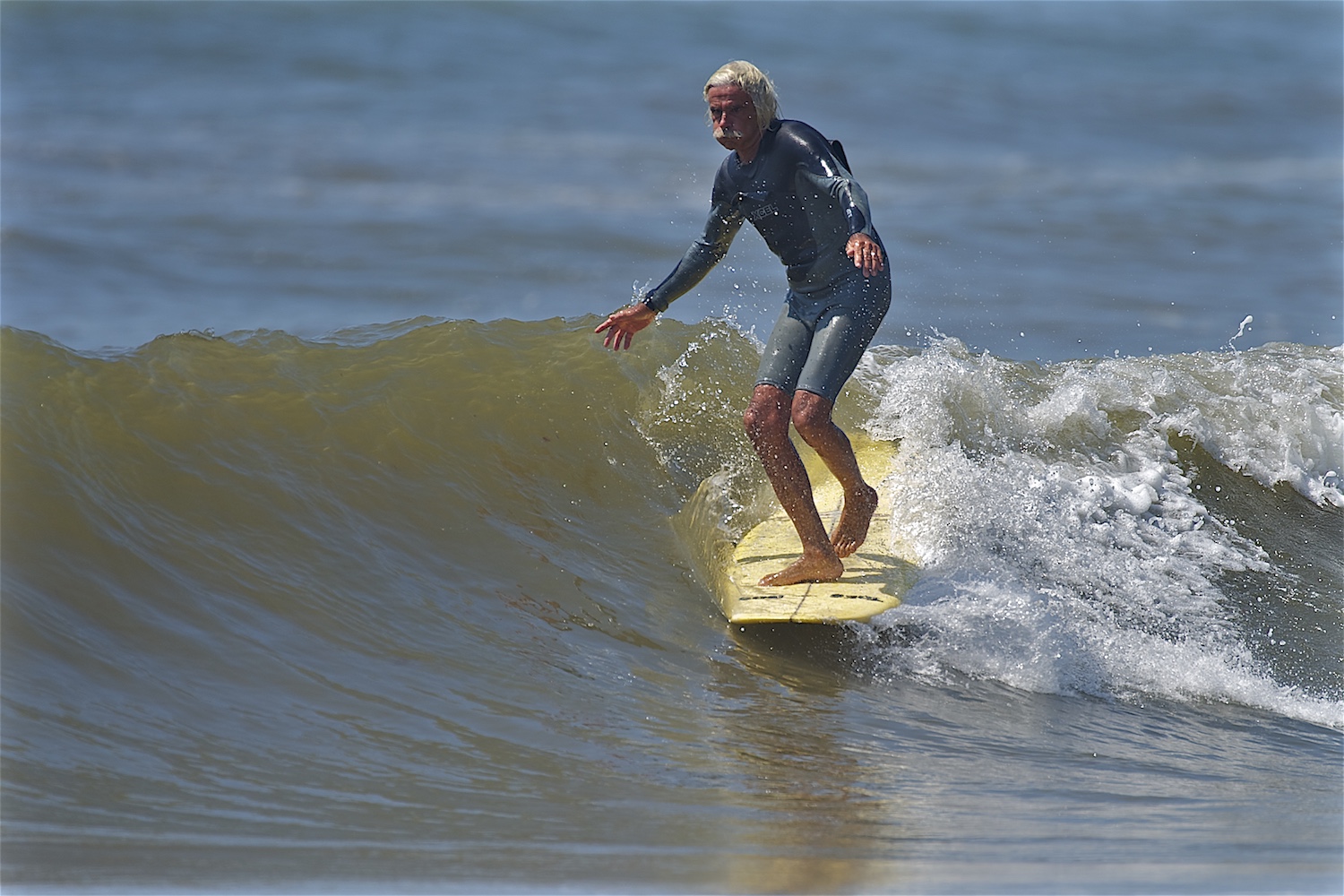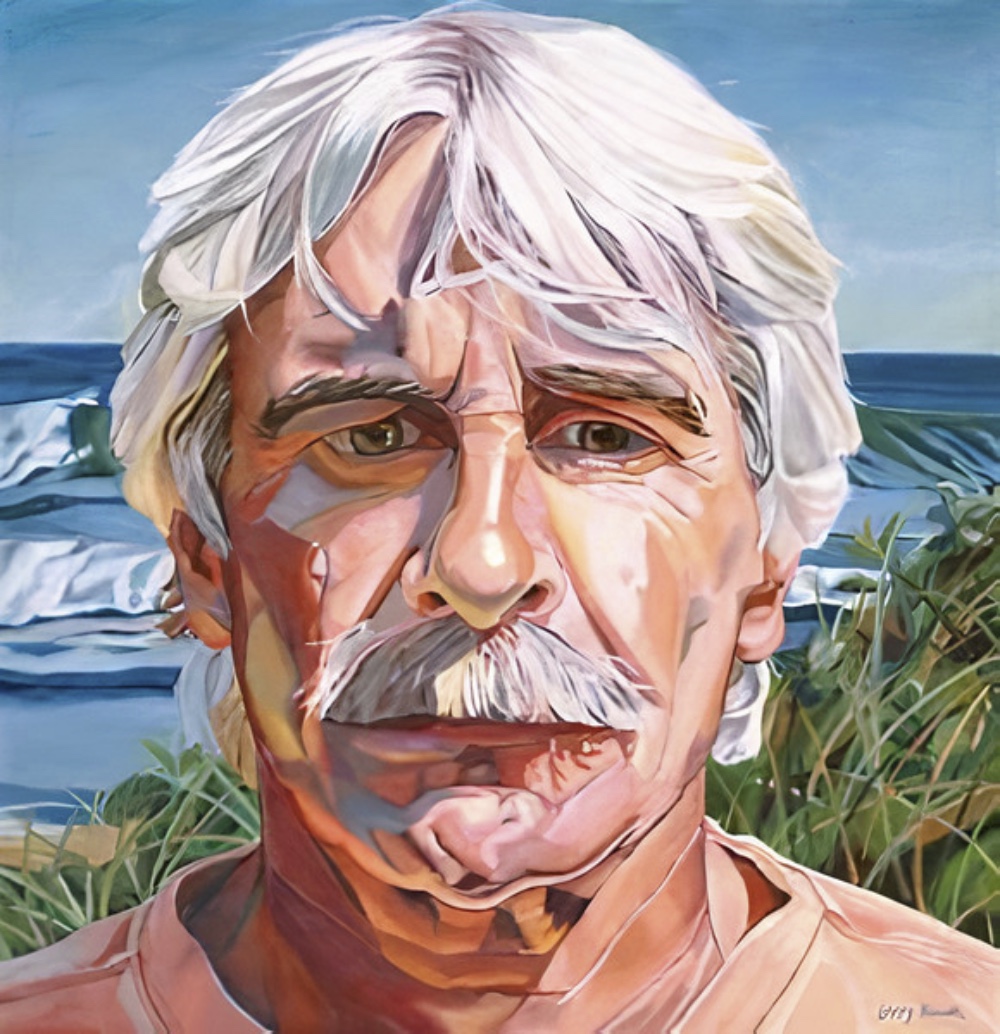Tony Caramanico
If a single moment in time can shape everything that comes after it, then that life-altering moment for Tony Caramanico came when he was 13 and first got on a surfboard. “I know the day, the wave, everything about it,” he said, sitting cross-legged on the couch in his Montauk cottage. “Gilgo Beach, Babylon 1963.” He remembers paddling out and catching the white water as the wave broke behind him, and he can still recall that unparalleled sensation of riding his first wave. He had found his calling. “A lot of people were surfers and life got in the way. I made sure it didn’t get in the way,” said Caramanico.
In 1980, he approached TV executives at ABC’s The American Sportsman with an idea to create an hour-long episode about traveling surfers. The response was positive. The surf spot was identified — they would film in Grajagan, Indonesia — and U.S. surfing champions Ricky Rasmussen and Linda Davoli, along with surfer, TV and film star Gregory Harrison, were chosen as the subjects.
What Caramanico proposed and organized was one of the most unique visual epics in the history of surfing — an Emmy Award-winning portrayal of traveling surfers, viewed by millions of people on TV screens across the country. Nothing like it had ever been attempted, and the beauty, danger, and remoteness of the venue stunned the American public, who for the first time got a glimpse of what surfers had been doing for decades.
Today, the signs of Caramanico’s singular obsession are all around him — his house is a treasure trove of surf memorabilia. There are photographs and antique surfboards designed and signed by surf legends – Caramanico is honored to have had his “The Cat” Greg Noll model and been on the Channin, Surftech and Tudor Surfboards teams – plastic fins plucked from the bottoms of retired boards, and floral “aloha” fabric picked up on trips to Bali. His outdoor shower is built out of old surfboards, and there are waves carved into his gate and shutters. The house says a lot about the man, but all the surf memorabilia is nothing compared to his diaries.
Every day for decades, he has written, scribbled, collaged, painted, clipped, rubbed, pasted, and pressed the record of his surf adventures onto the pages of his diaries. These creations have become a kaleidoscopic chronicle of his search for the perfect wave, from Montauk to Hawaii, South Africa to the Caribbean, and Indonesia to Japan. “I saw what was going on around me and I wanted to capture it,” Caramanico said.
Michael Solomon, a surfing artist, approached Caramanico about being in an art show at Glenn Horowitz. The show was curated by John McWhinnie, who made the prints of Caramanico’s epic pages a feature exhibit. Once again, the world found itself looking at surfing through the eyes of Tony Caramanico. He reflects, “I’m living this life that I always wanted to live and that’s my crowning achievement.”
Photos by Tom Dugan, Michael Heller, James Katsipis, MJR Photography, and courtesy Tony Caramanico and Letty Nowak
